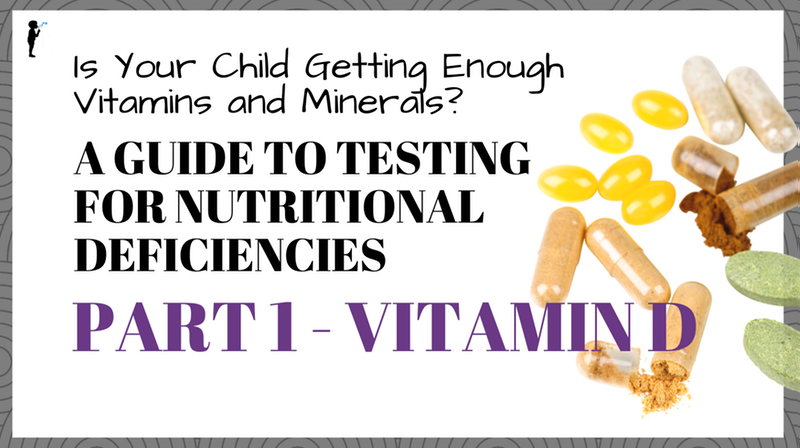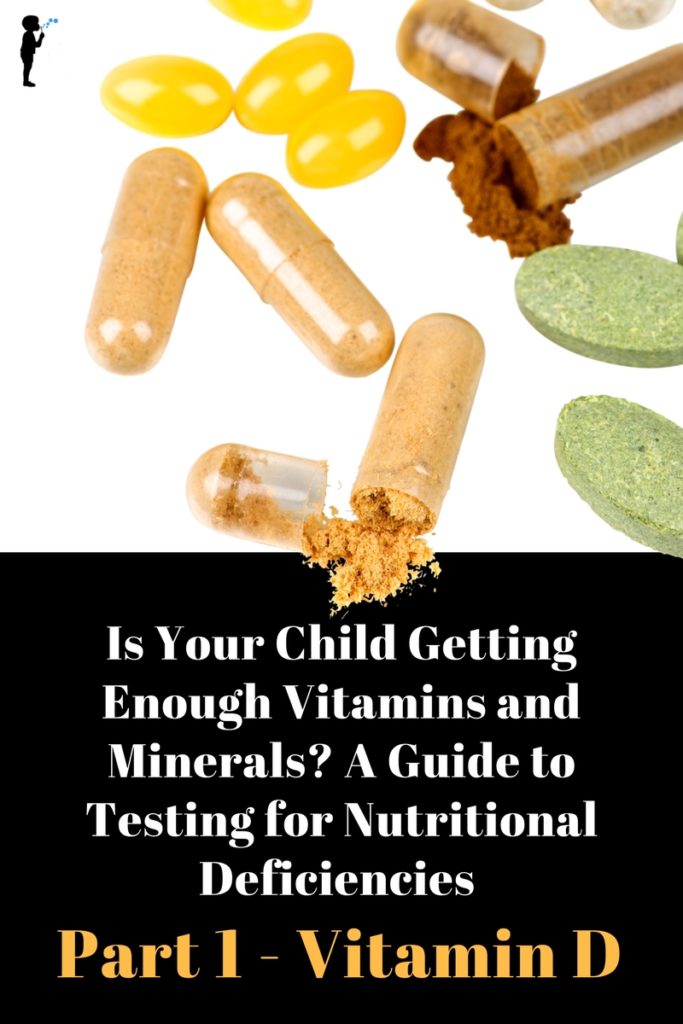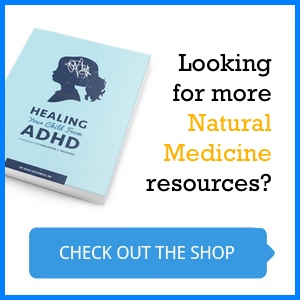
Is Your Child Getting Enough Vitamins and Minerals? A Guide to Testing for Nutritional Deficiencies (Part 1 – Vitamin D!)
Editors note:
A big thanks to Dr. Cori Burke for tackling the incredibly broad topic of nutritional deficiencies in children. This is a huge topic, and she has wisely split it into multiple sections. Stay tuned for more in this series!
A quick note and comment: Naturopathic Physicians are sometimes criticized for over-diagnosing “nutritional deficiencies,” or for excessively prescribing vitamins and supplements. It is always very important for physicians to have a conversation about why we are prescribing certain nutrients. In the case of vitamin D it is to prevent true vitamin D deficiency. In the case of some other vitamins and minerals we are often prescribing therapeutically to address an underlying symptom or issue. (An example would be dosing vitamin C above the Recommended Daily Allowance for something like seasonal allergies.) Sometimes it is both to prevent deficiency and to achieve a therapeutic effect, as in the case of magnesium and constipation. This series of posts is designed to discuss true nutritional deficiencies, symptoms of those deficiencies and how to accurately test. There is a lot of misinformation on the web!
~Dr. Erika Krumbeck, Editor of Naturopathic Pediatrics.
Whether because of picky eating, digestive issues, or lack of access to nutritious foods, many children (and adults!) aren’t getting enough vitamins and minerals. Without added supplementation, a high percentage of children and adolescents in the United States have inadequate levels of numerous nutrients. Perhaps not surprisingly, nutritional deficiencies are most common among teenagers.1
Common Causes of Nutritional Deficiencies
Nutrient deficiencies typically occur for the following reasons:
- Lack of adequate intake of vitamins or minerals
- This is the simplest reason that someone can have nutrient deficiencies; they just simply are not eating enough of the vitamin or mineral.
- Increased need for nutrients
- During illness or times of stress, our bodies require higher amounts of certain nutrients like vitamin C, zinc, and B vitamins.
- Health conditions can affect the ability to absorb nutrients from the diet
- Certain chronic health issues like Celiac disease and Crohn’s disease cause inflammation in the digestive tract that can prevent nutrients from being properly absorbed.
- Consuming high amounts of a food (or medication) that inhibits the absorption of a vitamin or mineral
- Did you know that milk decreases absorption of iron? Calcium and iron compete for absorption in the gut, so drinking milk with iron-rich foods can make it harder for the body to utilize the iron.2 This is just one example of a food that can contribute to nutrient deficiencies.
- Many medications can cause nutrient deficiencies. The most common example of this are the heartburn medications, Proton Pump Inhibitors (PPIs), which decrease absorption of some B vitamins and minerals.3
This article is the first of a series on the topic of nutritional deficiencies. In these articles I will talk about some of the most common vitamin and mineral deficiencies seen in children and adolescents. I will also discuss which lab tests can be used to evaluate your child’s nutritional status. First off, vitamin D!
Part 1: Vitamin D Deficiency
Importance of Vitamin D
Vitamin D is essential for:
- Healthy bone growth and calcium metabolism, and to prevent fractures and Rickets.
- Immune system function
- Cardiovascular health
- Hormonal balance
Additionally, having adequate vitamin D levels has been shown to:
- Reduce the risk of developing colon and breast cancers later in life.2,3
- Reduce risk of Multiple Sclerosis.
- Reduce risk of upper respiratory tract infection. (The common cold!) 8
- Help treatment of tuberculosis. 8
- Improve lung function in patients with asthma and COPD. 10
And best of all, vitamin D supplementation appears to:
- Reduce overall mortality! 9
Vitamin D is normally synthesized (made) in the skin after exposure to sunlight and is then transformed by the kidneys and the liver into the active metabolite, 25-hydroxy vitamin D. Unfortunately, many people do not produce quite enough vitamin D on their own. Vitamin D deficiency is one of most common nutritional deficiencies seen in both children and adults. In the Pacific Northwest where I practice, almost all of my patients are low in vitamin D. I commonly order testing to assess kids’ vitamin D status so that I can get them started on an appropriate dose of this vitamin.
Signs and Symptoms of Vitamin D Deficiency
Although rare, severe vitamin D deficiency can cause Rickets in children or Osteomalacia in adults. These are disease of the bone that can lead to deformities and fractures. Most people with low vitamin D levels have no specific signs or symptoms, although in my own practice I often see this associated with tiredness and frequent illness. Children with vitamin D deficiency may also start walking later than their peers. During pregnancy, low blood levels of vitamin D have been linked to an increased risk for small-for-gestational age and low-birth-weight infants.4
How common is Vitamin D Deficiency?
Very common, especially in children who are overweight or obese. One small study in Boston showed 40% of children in the study had suboptimal vitamin D, and one child even had signs of Rickets. Another study showed that about 20% of healthy-weight children were vitamin D deficient, up to almost 50% of very obese children.
Risk Factors for Vitamin D Deficiency
Risk factors for vitamin D deficiency include lack of sun exposure, living in Northern latitudes, and having a darker skin tone. The skin pigment melanin naturally blocks UVB rays and can interfere with the synthesis of vitamin D in the skin. Northern latitudes are areas of the world furthest from the equator where there is little direct sunlight for much of the year. In these areas, the skin makes little if any vitamin D except during summer months.5
Testing Options for Vitamin D Levels
There are a few testing options to assess vitamin D status but vitamin D 25(OH) is by far the most common and useful test. This tests for the storage form of vitamin D, 25-hydroxy vitamin D. It is a simple blood test that can be ordered by your doctor or other health care professional.
Should I supplement my child with Vitamin D?
The best way to know how much vitamin D your child needs is by getting the vitamin D 25(OH) blood test. Current recommendations are for breast-fed infants to receive 400 IU of vitamin D daily to prevent deficiency. Because formula is fortified with vitamin D most formula-fed babies do not need additional supplementation. The Institute of Medicine now recommends 600 IU of vitamin D daily for all children age 1+ (all the way to age 70!)

Stay tuned for Part 2: The B Vitamins!
References:
- Berner, L. A., Keast, D. R., Bailey, R. L., & Dwyer, J. T. (2014). Fortified Foods Are Major Contributors to Nutrient Intakes in Diets of US Children and Adolescents. Journal of the Academy of Nutrition and Dietetics, 114(7), 1009-1022.
- Iron Disorders Institute. Retrieved April 04, 2018, from http://www.irondisorders.org/diet/
- Harvard Health Publishing. Retrieved April 04, 2018, from https://www.health.harvard.edu/staying-healthy/are-your-medications-causing-nutrient-deficiency
- Linseisen, J, Slanger T, Kropp S, Mutschelknauss EJ, Flesch-Janys D, Chang-Claude J(2008). Serum 25-hydroxyvitamin D and risk of post-menopausal breast cancer–results of a large case-control study. Carcinogenesis, (1):93-9.
- Yin L, Grandi N, Raum E, Haug U, Arndt V, Brenner H (2011). Meta-analysis: Serum vitamin D and colorectal adenoma risk. Preventative Medicine, 53(1-2).
- Aghajafari F, Nagulesapillai T, Ronksley PE, Tough SC, O’Beirne M, Rabi DM (2013). Association between maternal serum 25-hydroxyvitamin D level and pregnancy and neonatal outcomes: systematic review and meta-analysis of observational studies. BMJ, 346.
- Harvard Health Publishing. Time for more vitamin D. Retrieved April 04, 2018, from https://www.health.harvard.edu/staying-healthy/time-for-more-vitamin-d
- D A Hughes and R Norton. Vitamin D and respiratory health. Clin Exp Immunol. 2009 Oct; 158(1): 20–25.
- Autier P, Gandini S. Vitamin D supplementation and total mortality: a meta-analysis of randomized controlled trials. Arch Intern Med. 2007;167:1730–7.
- Song Y, Qi H, Wu C. Effect of 1,25-(OH)2D3 (a vitamin D analogue) on passively sensitized human airway smooth muscle cells. Respirology. 2007;12:486–94.
- Gordon CM, Feldman HA, Sinclair L, et al. Prevalence of Vitamin D Deficiency Among Healthy Infants and Toddlers. Archives of pediatrics & adolescent medicine. 2008;162(6):505-512. doi:10.1001/archpedi.162.6.505.
- Turer CB1, Lin H, Flores G. Prevalence of vitamin D deficiency among overweight and obese US children. Pediatrics. 2013 Jan;131(1):e152-61.
- A. Catharine Ross, JoAnn E. Manson, Steven A. Abrams, et al. The 2011 Report on Dietary Reference Intakes for Calcium and Vitamin D from the Institute of Medicine: What Clinicians Need to Know, The Journal of Clinical Endocrinology & Metabolism, Volume 96, Issue 1, 1 January 2011, Pages 53–58, https://doi.org/10.1210/jc.2010-2704



